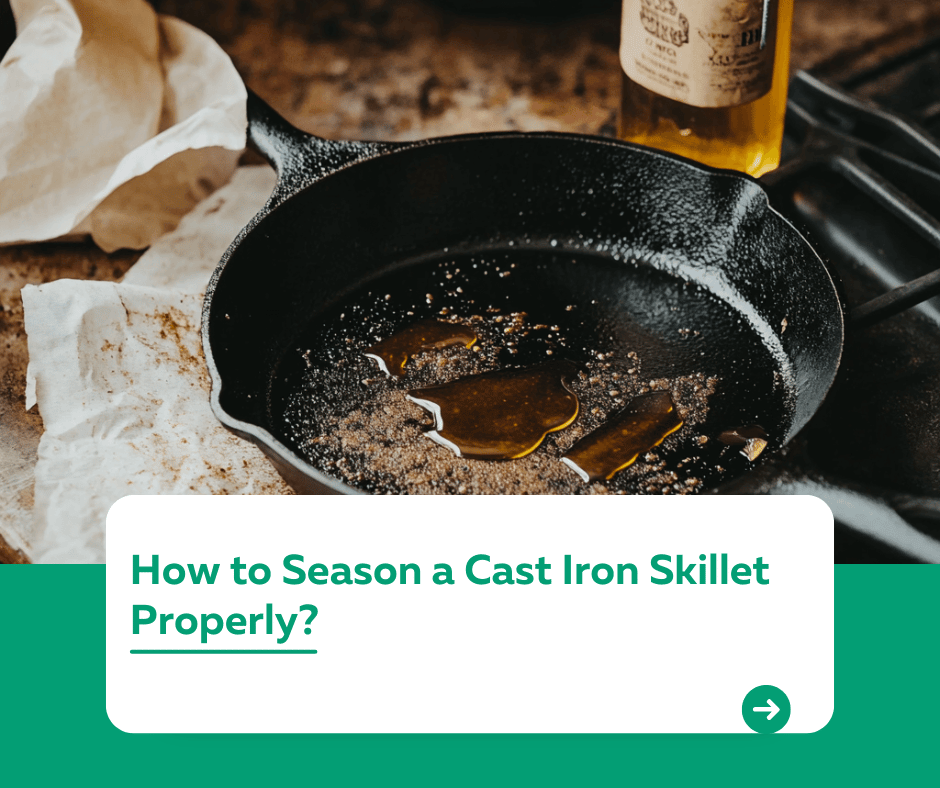
Introduction
“How do you season a cast iron skillet properly?”
Seasoning a cast iron skillet is key to unlocking its full potential. A well-seasoned skillet develops a natural nonstick surface, enhances flavor, and protects against rust. Whether you’re restoring an old skillet or seasoning a new one, this guide walks you through the process step by step.
1. What Does Seasoning Mean?
Seasoning is the process of creating a nonstick coating by polymerizing fat onto the skillet’s surface through heat.
- How It Works:
- Oil bonds to the cast iron when heated, forming a hard, protective layer.
- Benefits of Seasoning:
- Creates a smooth, nonstick cooking surface.
- Prevents rust and extends the skillet’s lifespan.
2. What You’ll Need
To season your skillet, gather the following:
- A clean, dry cast iron skillet.
- High-smoke-point oil (e.g., flaxseed oil, vegetable oil, or grapeseed oil).
- Paper towels or a clean cloth.
- An oven or stovetop.
Pro Tip: Flaxseed oil is a favorite among cast iron enthusiasts for its ability to create a durable seasoning layer.
3. Step-by-Step Guide to Seasoning
- Clean the Skillet:
- Wash the skillet with warm, soapy water and scrub away any rust or debris.
- Dry thoroughly with a towel or by heating it on the stovetop.
- Apply Oil:
- Pour a small amount of oil into the skillet.
- Use a paper towel or cloth to rub the oil over the entire surface, including the handle and exterior.
- Wipe off excess oil to avoid sticky residue.
- Heat the Skillet:
- Oven Method:
- Preheat the oven to 450°F (230°C).
- Place the skillet upside down on the oven rack with a baking sheet underneath to catch drips.
- Bake for 1 hour, then let it cool in the oven.
- Stovetop Method:
- Heat the skillet on medium-high until it smokes.
- Turn off the heat and let it cool completely.
- Oven Method:
- Repeat the Process (Optional):
- For a stronger seasoning layer, repeat the oiling and heating process 2–3 times.
4. Tips for Maintaining Your Seasoned Skillet
- Avoid Soaking: Clean with warm water and a brush instead of soaking.
- Reapply Oil After Use: A light layer of oil after cleaning keeps the skillet seasoned.
- Cook Regularly: Cooking fatty foods like bacon helps build and maintain seasoning.
- Avoid Acidic Foods Initially: Foods like tomatoes can strip the seasoning on a newly seasoned skillet.
Conclusion
Seasoning a cast iron skillet is simple and rewarding. By following these steps, you’ll have a reliable, nonstick pan that lasts for generations. With proper care and maintenance, your skillet will only get better with time.
For more kitchen tips and cookware guides, visit our Kuestion.com.